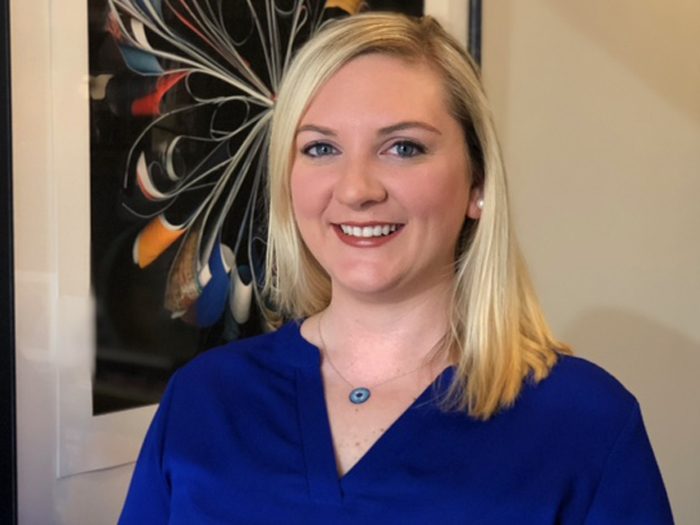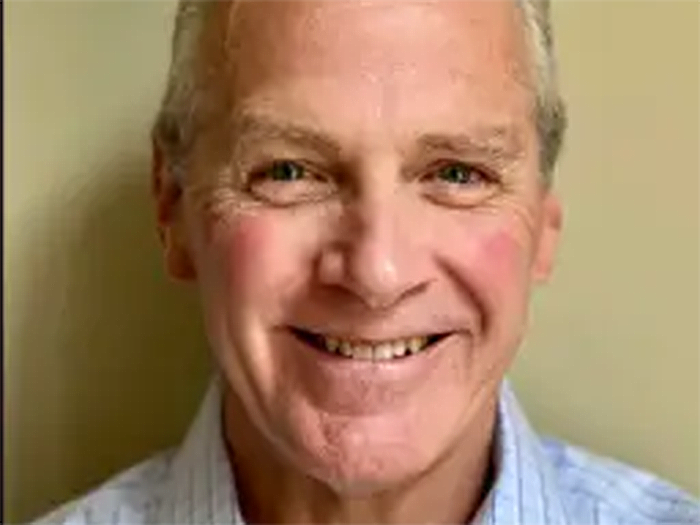Rising Star Kristina Marcigliano of Risk Strategies Talks About Reopening the Art World, and More

Come see the Stars! As part of our ongoing coverage of the best brokers in the commercial insurance space, Risk & Insurance®, with the sponsorship of Philadelphia Insurance, is expanding its coverage of the Rising Stars, those brokers who represent the next wave of insurance brokering talent.
Look for these expanded profiles on the Risk & Insurance website and in your social media feeds now and continuing into 2022.
Here we talk to Kristina Marcigliano, senior account executive at DeWitt Stern, a division of Risk Strategies, and a 2021 Fine Arts Power Broker finalist and Rising Star.
Risk & Insurance: What was your biggest win as a fine arts broker this past year?
Kristina Marcigliano: My biggest win in 2021 has been the rising activity and now the new life that’s coming to everyone in the art world after being closed due to COVID.
That involves tackling the immediate surge of business that has come into this new year and the new awakening that the art world is seeing. We’re now attending art fairs, exhibitions are happening, and we’re able to see the art in person again.
So, a big focus has been on being readily available not just to attend those events, but to also help my clients prepare for these events. All of a sudden, we were reopening, and there wasn’t really a progressive reopening.
With everything coming back to life, being able to be there for my clients and help them navigate the challenges of reopening after a pandemic while being able to reconnect and visit with each other, and doing it in a safe way, has been really rewarding.
R&I: How did you come to work as an insurance broker?
KM: I was out of college and wasn’t really sure what career path I wanted to go into. I studied at the University at Albany upstate, and my major was in U.S. history with a business minor focusing on accounting and economics. I thought I wanted to be a high school teacher in order to continue spreading my knowledge of U.S. history.
But I didn’t want to dive right into anything serious, so I took a temp job in New York City for an insurance brokerage and fell in love with the idea of insurance, and how it works, and I just dropped the idea of becoming a teacher and decided to continue with insurance.
I studied history and loved it, and I was so passionate about it in college. Now I feel like I’m playing this role and helping protect our cultural heritage and our history with artwork.
I started as a receptionist on the admin side and worked my way up. I helped with a little bit of admin on claim and then went for my brokers license and became a licensed property and casualty broker in New York City.
R&I: How would you describe your journey in insurance so far? What have you experienced in your career that was unexpected or exciting?
KM: I’ll be honest, I didn’t ever expect to see myself becoming a fine arts insurance broker. I would have never guessed in a million years insurance would have become my passion.
It’s really become something I geek out on and that I just thoroughly enjoy, especially in the fine art sector of the business. I find that no day is the same as the last. It’s never a “Groundhog Day” moment.
There’s always so many different transactions happening on the art side, and there’s so many different types of scenarios that are happening with artworks — whether it’s just a buy and sell transaction or a crazy loan going to this magnificent museum across the world or a traveling exhibition where it’s going to go from museum to museum and you’re protecting it on every leg of that journey.
I never imagined I would get to see all the amazing cultural aspects surrounding art around the world or that I would play such an important role in protecting artwork as it moves around and grows its own history.
I studied history and loved it, and I was so passionate about it in college. Now I feel like I’m playing this role and helping protect our cultural heritage and our history with artwork.
R&I: As you look ahead, what do you think the most pressing issue for many of your clients will be in the remainder of 2021 and into the first half of 2022?
KM: I think that a lot of my clients are still in that process of reopening, getting back to what real life used to be. They’re getting back to feeling comfortable with being around shows and customers and clients wanting to come in and buy the art. So in 2021 we’re still navigating what that reopening looks like and how they will ensure everyone stays safe during that reopening.
I don’t think that’s specific to the art world, though. I think that in business, and life in general, everyone’s trying to navigate how we’re going to handle life again after being so disconnected for the past year.
This next year, there’s going to be a very sudden rise of activity. We usually have a lot of art fairs in December, and last year, every single art fair was closed or shutdown, and the most you could do was attend an event virtually.
So, I think this year, the struggle is going to be suddenly adjusting to having all these art fairs pop up again. A lot of our work revolves around moving art and trying to navigate the logistics of what items are going to what art fairs, when do they have to be in Florida versus when do they have to get to California versus when do they go back to New York.
In the art world, the broker who handles your insurance is going to become your best friend, because you’re really going to be heavily relying on them to ensure you have the proper coverage for all these upcoming movements that weren’t there in the past year.
You may have been quiet with your broker in 2020, because there wasn’t a lot going on. You weren’t moving artwork, but now you’re suddenly going to have to pick up the phone and rekindle that relationship into the next year because, as artwork is moving and things are selling and things are being displayed, you want to make sure it’s protected during every inch of that transaction.
Making sure you’re connecting with your broker during these upcoming months is going to be really important in the art world.
R&I: What advice would you give to a young person starting their career in insurance after studying something in a different field or who didn’t expect they would land in insurance?
KM: I actually have some very close family members who are just recently out of college and not sure where they’re going to land or where they want to end up. And I told them to consider taking part-time jobs or even low-level jobs in any industry, even if it seems outside of what you studied or your expertise.
I find that with insurance you can study anything and have it adapt to the insurance industry. Whether it be a subject like accounting, so now you want to get into maybe forensic accounting and that side of insurance claim, or be like me, where you studied history and you dove into the fine art and specie realm where you’re working with rare artifacts and helping protect them.
I’ve never heard anyone say they set themselves up and planned to go into the insurance industry unless they had family members who were there already.
It’s so important to be open minded, because when you hear about insurance, you might just think of GEICO or Progressive or other commercials you see on TV. But there’s so much more. There’s so many different departments within an insurance company or an insurance brokerage.
There’s so many different elements of the insurance industry. It’s not just an insurance company where you would be sitting as an underwriter. You should really test the waters and dip your toe in all the different areas and departments of the industry to see if there’s anywhere you might fit in, because it’s such a busy, growing and interesting business to be in.
Like I said, there’s never a dull day. I’m always learning something new, and I never feel like it’s Groundhog Day. It never truly feels like work to me. I feel like I’m still learning; it almost feels like school sometimes. I’m still learning something new, and I’m going in.
The markets are always changing, too, so there’s always room to grow and learn and move forward. If you’re looking for a job and an industry to be in where things are never stale or stagnant, insurance is definitely something I’d recommend. &











